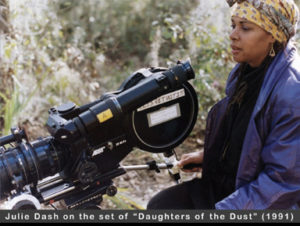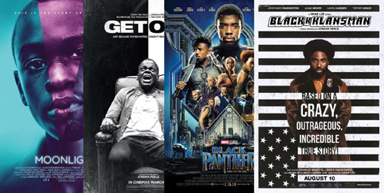
There is a euphoria in the air…about Black films today…the groundbreaking records of recent and past years speak to this. More Black directors received Best Director and Best Picture Oscar nominations in the past five years than in the rest of the history of the Academy Awards combined – and of the six Black directors that have been nominated for Best Director, outside of John Singleton’s nod for “Boyz In The Hood” (1991), all have come in the last decade. Best Picture winner “Moonlight” (Barry Jenkins, 2017) shed a rare light on the Black LGBTQ community; Best Original Screenplay winner “Get Out” (Jordan Peele, 2017) was a horror/thriller that broke stereotypes and attracted all kinds of audiences; Best Adapted Screenplay winner “BlacKkKlansman” (Spike Lee, 2018) portrayed a Black detective infiltrating the KKK; and the record-breaking smash hit “Black Panther” (Ryan Coogler, 2018), which generated $1 billion in worldwide gross box office receipts and became one of the top 5 domestic grossing movies of all time, featured a Black superhero and a pre-dominantly Black cast.
“Cooley High” (1975) and “Car Wash” (1976) director Michael Schultz was part of a different generation of Black talent in Hollywood. In his interview, he explained: “I appeared in the film world at a time when things were opening up, and they were looking for people who were qualified. That window of opportunity didn’t last more than ten years. In ten years, suddenly the women were starting to disappear from the crews. There were fewer and fewer brown and Black faces around, and it had kind of shifted back to the good ol’ way, with the good ol’ boys’ network basically running things”. Legendary actor and activist Ossie Davis added additional insights: “You know, ‘A Raisin in the Sun’ had not made money as a film, Gordon Parks’ ‘The Learning Tree’ had not made money, but ‘Cotton [Comes To Harlem]’ made money with only the African American community giving it support. Hollywood, being broke, looked and they saw, and they said, “Hey, come in.” And for ten years, we were allowed to make films, which they called blaxploitation films and when the Black folks got tired of that and they refused to come, they showed us the back door.”
Film producer Debra Martin Chase, known for “The Sisterhood of the Traveling Pants” (2005) and “The Princess Diaries” (2001), added additional insights in her 2005 interview, “It becomes a self-fulfilling prophesy because if you can only make a movie for $12 million, and it’s a very specific story, and they don’t put any effort into marketing and distributing it abroad because they don’t believe it has potential, how are you ever going find out?” According to a 2018 USC Annenberg inclusion initiative report examining the 100 top-grossing movies each year from 2007-2017, “across 11 years and 665 different directors, 31 individuals Black helmers (4.7%) were attached to 63 of the 1,100 movies.” Furthermore, “most Black directors only make one film (71%), which is 14.5% above the percentage of non-Black directors with only one movie.” The report also shows that “of the 63 movies with a Black director, 81% had a Black actor attached as one of the two top-billed talent”. Publicist and co-founder of the African American Critics Association Gil Robertson, IV may have summed up the change that is needed in Hollywood the best in his 2018 interview, “The big problem in Hollywood is not the racial composition or the composition of the Academy, but it’s having executives in place who are willing to green light projects reflecting the world that we live in, that include the diversity that exists in our day-to-day lives. It’s about creating pipelines and leaving open pipelines so that people of every hue and background can be a part of the industry and of telling those stories.”
We hope that with the advent of other distribution and production channels like Hulu and Netflix and the recent blockbuster success of movies with black leads, helmed by black directors, that a change may be on the way – but we also must recognize the times that we are in. It is a time that American-born citizens are told to go back to their country by the highest office of the land, gerrymandering and voting rights are still hotly contested issues, and many still questions whether the American dream and citizenship are offered equally to those of all colors and backgrounds. Given all of this, the film industry’s role in telling stories beyond the narrow interpretation of a people’s experience may prove to be more powerful than we ever imagined.
